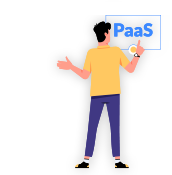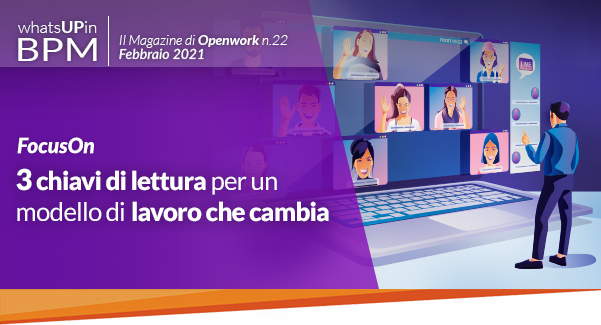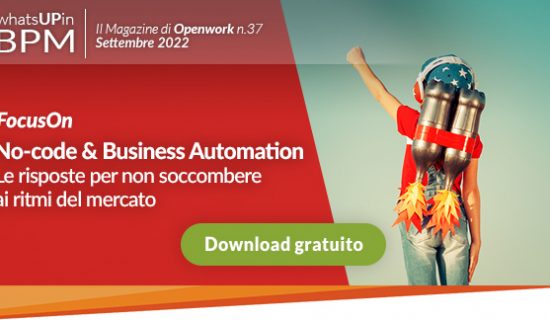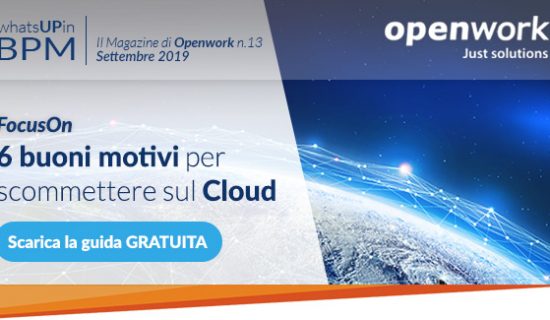The advent of the pandemic has shaken the world in all its declinations, triggering a process of revisiting not only our habits but, more importantly, our approach to work by "forcing" our hand toward a smart-type mode for which we were not really prepared.
We have all sensed that something has jammed in the mechanism ofwork organization and, as is often the case at times when a paradigm shift occurs, there is an opportunity to rethink in depth the way we understand work.
Although many interesting reflections have remained captive in a debate that has sometimes taken on the tones of football cheering, we must continue to go in search of a new balance, different from company to company, composed of different and heterogeneous factors, because this is the challenge of complexity.
A number of management and organizational experts have long pointed out the inadequacy of many organizational and management practices, just to name one of the best known, Gary Hamel in his book "Humanocracy" points out that the individuals who make up an organization are often far more resilient, creative and motivated than the organization itself and identifies the cause of this rigidity and poor ability to put people's talents to use in the bureaucratic mentality with which most organizations are run.
What's wrong with work
Where to start then for this paradigm shift?
To resolve a complex issue with a joke, it involves rethinking the "Charlie Chaplin" model (in the famous assembly line scene in Modern Times) that is, the idea that it is "more efficient" or "value-added" to break down activities and work processes into minimal activities, each entrusted to one person who does just that, while great care is put into planning, controls and controllers who must make sure that planning and rules are scrupulously observed.
The problem? Continuing to replicate an approach born in the factories of the late 19th century that might have made sense in that historical context but in today's world of work made up of integrated processes, high professionalism and intellectual activities, simply fails to work and generate value.
Paradoxically, introducing high specialization and fragmentation into a process that should instead be integrated does not generate efficiency but achieves the opposite result. Having atomized the responsibility of individuals within the process, it in fact forces us to spend a lot of time stitching up the value chain and coordinating the different people and activities with each other, all time taken away from real value-adding activities for customers.
A very personal benchmark, based on projects and observations at clients in recent years, says (without claiming to have general validity or scientific rigor) that time spent on coordination, formal and informal, is worth at least 20-30% of the hours we spend at work. We are not talking about meetings for creative development and confrontation of ideas or aspects of sociability and relationships, we are only counting time spent on operational coordination between people and activities, managing conflicts of priorities between offices, unforeseen contingencies not defined by existing rules and procedures, and so on.
Pandemic and remote working (which is not smart working, we have already said) has simply brought this inefficiency to light. Moments that used to be informal and immediate: the question asked to the desk neighbor, the conversation between the boss and another colleague overheard in the open space, the on-the-fly question about the project asked in the hallway or at the coffee shop, were things we didn't even pay attention to but served each person to recreate the context of his or her work that the fragmented organization of processes had caused to be lost. Physical distance erased this context and replaced it with more calls, chats, messages to "align," "coordinate," "take stock." Suddenly that hidden time appeared to us in all its relevance.
Two questions to explore
Where to start then to address this problem?
It is necessary to rediscover the role of sometimes uncomfortable questions, which lay bare the real problems and which, if received without fear, provide valuable insights.
Mainly two:
- Why?
- What are we taking for granted?
Asking why (many times, like children) serves to move up the chain of causes when analyzing a problem. It helps to go beyond first impressions and the hasty or incomplete explanations we give to what we observe. It allows us to see if there may be an alternative reading of the facts, a different way of linking cause and effect, a different explanation to people's behavior.
Instead, asking what we are taking for granted serves to uncover blind spots in the construction of solutions. A new product or project plan, as well as the answer to an operational problem we've had, are always speculations based on assumptions, very often true acts of faith of which we are not fully aware. Creating solutions to these questions without having thoroughly verified, possibly with facts, in the field exposes us to risks of which we are not always aware and thus to unpleasant surprises.
Tailoring solutions
The space of management consulting and theories is crowded with tools or methods proposed as quick, infallible and above all, cheap.
The attraction of these proposals is very strong: in the face of the complexity of the problems, thinking that you can apply a set of rules, a three-, five-, ten-step predefined approach, a methodology, or a set of ready-to-use tools, seems to simplify the task of bringing about change. If things do not go according to plan, it will simply be the fault of the method, the tool, the consultant, or the people resisting change.
Desirable as it may seem, however, this perspective has a limitation: it does not help solve problems but shifts them from one side to the other. What is needed is tailoring work to make full use of the economic value of the benefits to be gained.
Three keys to rethinking work
While there is no predefined path, there are three indispensable elements for those who want to rewrite the way they work in the company, whether in presence, remotely or in a true smart working context, where people alternate between individual and team work, in diverse locations and times:
- People
- Organization
- Processes
People, where the key word is: trust. Gary Hamel again reminds us that the essential characteristic of a bureaucratic enterprise is to maximize control over individuals in pursuit of organizational efficiency while today's increasingly volatile and accelerated environment rather requires agility, which, however, is difficult to achieve unless the collective intelligence of the people who work in organizations every day is unleashed. The first step on this path is to restore confidence and thus operational and decision-making autonomy to all levels of the company, obviously by defining and sharing with everyone, much more extensively and clearly than today, what the common goals are and the concrete contribution that everyone's work makes to achieving these goals.
Organization. The key word here is: multifunctionality. One possible way to combat fragmentation and thus reduce all coordination activities and the hiccups they generate in remote work is to rethink the structure of operational teams by creating multifunctional structures, composed of people no longer divided into functions and offices on the basis of their skills but united by having responsibility for a channel, a product, a process, a customer or group of customers. This promotes both face-to-face and remote work because all the skills and authority needed to independently manage one's objective are present within a smaller team, thus limiting the number of actors that need to be involved to make decisions and manage operations.
Processes, whose key words are: homogeneity and automation. A process becomes homogeneous when the rules for its management are known to all those operating within it, and exceptions or special cases are gradually integrated within the process in a logic of continuous improvement. . Metrics of how well the process is working are also clear and available to everyone, helping each person understand how his or her work is contributing to the overall outcome of the process and ultimately to the creation of value for the customer. Automation, on the other hand, means relieving people of the task of managing transitions between process steps by replacing them with an automated system of rules and hubs where technology "directs the traffic" of individual practices according to clear yet flexible rules, so that the activities to be performed are presented to each person in an orderly manner, focusing their attention on value-creating activities, customer contact and evaluations on the merits of requests or things to be handled.
The moment the management of the "flow" of work no longer falls to people, there is less downtime spent trying to manage unforeseen events or waiting for decisions and responses from other people or functions. This frees up time to devote to true exchanges of value, done remotely and in presence: sharing experiences, setting goals, envisioning the evolution and improvement of the work and the team.
In a word, everyone's work is really starting to become "smarter."
Openwork and Treccani in an event dedicated to Digital Health. Appointment on March 19, 6 p.m.
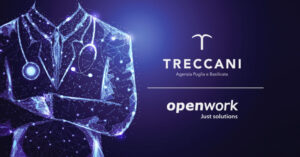
Openwork is pleased to announce its participation in the event sponsored by Treccani - Apulia and Basilicata Agency - entitled "Digital Health the new frontier of medicine: meanings and applications."
Thanks to its commitment to digital health over the years, as well as the prestigious awards it has received through the Jamio platform, Openwork was chosen by Treccani to offer its contribution in a meeting dedicated to Digital Health.
Scientific and technological progress, in fact, outlines its scenarios through these two new words whose meanings are explained within the Treccani encyclopedia.
The event, therefore, in addition to emphasizing the meaning of Digital Health, aims to understand its application in the field and its expected benefits; in particular, some concrete cases of its use will be analyzed in order to understand its approaches, potential and perspectives within our society.
Three professionals in the field will compare themselves at the event:
Prof. Eugenio Santoro
Resp. Laboratory of Medical Informatics
Mario Negri Institute of Pharmacological Research IRCCS
Editor of the definition of Digital Health in Appendix X of the Italian Encyclopedia Treccani
Dr. Piero Cosoli
Health Business Line Manager of Openwork Ltd.
Dr. Maurizio Leone
Director UOC Neurology, IRCCS Casa Sollievo della Sofferenza
The event will be held online Friday, March 19 at 6 p.m. (limited availability)
Below is the registration link: https://forms.gle/gQbhXAhX8UD1pW8c8
jBIZ and jTECH, the news of the magazine!
Openwork 's magazine is enriched with new content.
Through solutions and concrete use cases, we will discover how to streamline the complexity of processes with the features offered by Jamio, the Business Process Management cloud platform.
jBIZ | Business Digitalization according to Jamio
The management of authorization processes.

In the complex scenario of business processes, those of an authorization nature are among the most numerous, cross-cutting and articulated.
Every organization handles thousands of documents per year, articulated approval procedures, based on business rules, review activities, rebounds, very often in an unstructured and haphazard manner.
Such processes can also involve the entire organizational structure, elevating the complexity of management and issues. Typically referred to as long running, authorization processes, once started, can sit idle for a long time until someone, identified on the basis of written and unwritten rules, takes action to "make a decision." These processes although very different, have common elements and can be managed with Human task management applications supported by Business Process Management Platforms.
Continue reading...
jTECH | Application development through Jamio
Generating and converting a PDF file from a Jamio resource

Let's learn how to generate a PDF report through the use of a sample Jamioware called NotaSpese .
The Jamioware allows for the completion of an expense report by a requester (de-named in the Contributor Jamioware) and the automatic generation of a report that is attached to the request itself containing a graph on expense trends, a photo of the requester, and a table detailing the expenses.
Forthis purpose, the following are defined in Jamioware:
- a data type Notaspense Request;
- a Collaborator Identity type;
- a process called ElborazioneNotaSpese, for managing the approval cycle;
- a process called ApplicaTimbroReport, for generating the report in word format and subsequent PDF conversion with stamp application;
- a process called GeneraReport, for generating only the report in word format;
ONE MINUTE TO EXPLAIN HOW IT CAN CHANGE YOUR WORK WITH JAMIO
In an ever-changing market, you need technologies to follow your needs.
Here is Jamio's video.





